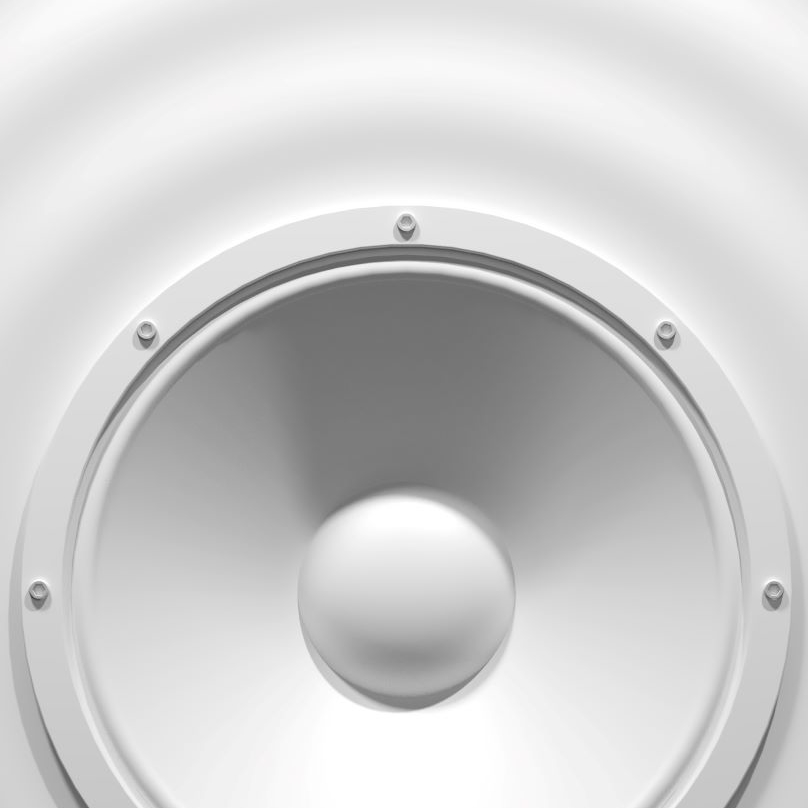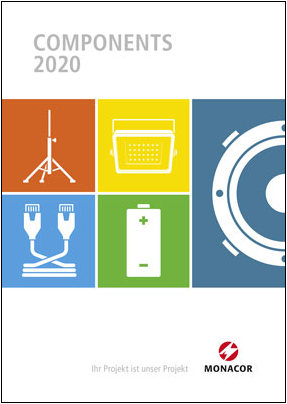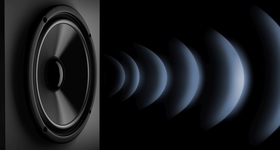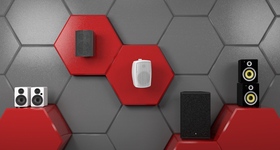
Thiele-Small parameters
You should have already heard of these key figures if you want to build your own speakers
Speaker drivers and housings are quite complex in their design and functionality. That's why we can measure them with many specifications and parameters. Some of which are the Thiele-Small parameters. This article will explain the most important parameters.
What are Thiele-Small parameters?
Thiele-Small parameters are a subset of speaker specifications. They are mostly specified on the data sheets of individual cones or complete speaker systems. Thiele-Small (T/S) parameters arise from a series of measurements that define
mechanical,
electrical and
electromechanical
properties of a speaker define. The Thiele-Small parameters apply in particular to individual chassis and housings (with or without ventilation). They provide full information about the design and performance of the speaker.
The history of the Thiele-Small parameters
The T/S parameters are named after the engineer Albert Neville Thiele from the Australian Broadcasting Commission and Richard H. Small from the University of Sydney. Both scientists pioneered the specifications for speaker analysis. Thiele's initial set of parameters dates back to 1961, and Small expanded it with his releases beginning in 1972. Audio professionals have continued to add to the list since then. Today, many manufacturers use the parameters.
Why are Thiele-Small parameters important?
For consumers and later users, the parameters are not particularly important. But if you are building speakers yourself, the Thiele-Small parameters are a good way to understand the speaker's potential functionality. The Thiele-Small parameters also give the designer a good idea of
how big the housing and
how long should the bass reflex opening should be.
Many experienced designers want to achieve specific key figures with their speakers in DIY build projects. They work backwards from these desired target metrics by selecting specific audio components which will then lead them to the desired "target speaker".
The Thiele-Small parameters show how a driver will work in a device. We learn about the position, speed and acceleration characteristics of the cone, the impedance of the driver and the overall sound.
The most important Thiele-Small parameters
It is important to know that the system is based on circuit analysis theory. All parameters are linked to components such as capacitors, inductors and resistors. Therefore, most of the parameters are closely related and intertwined by mathematical equations. In this article, we present the key parameters.
Resonant frequency (Fs):
Measured in hertz. The resonant frequency Fs (sometimes F0) refers to the free-air resonant frequency of the speaker driver. It is the frequency at which the speaker moves with minimal effort.
The resonant frequency is the point at which the weight of the speaker's moving parts is compensated by the force of the speaker suspension as it moves.
A more compliant suspension (higher Cms and a larger moving mass (higher Mms/Mmd) result in a lower resonant frequency (lower Fs). Without the help of a housing with apertures, the speaker is much less efficient at reproducing frequencies below the resonant frequency. Input signals far below the resonant frequency can damage the speaker.
The Fs parameter is the point at which the frequency response of the speaker starts to fall off in the low end. It is only relevant for bass speakers and subwoofers.
This is because we expect these speakers to generate frequencies near (and below) the resonant frequency. In the same conditions, a speaker with a lower Fs value is better suited for reproducing low frequencies. Please note: This is a general rule, as there are other parameters that affect the final frequency response of the speaker.
Suspension compliance (Cms)
Measured in meters per Newton (m/N). The Cms value describes the suspension compliance of the speaker suspension. The suspension compliance consists of the spider and the surround. This parameter is the force exerted by the speaker's mechanical suspension. Cms is proportional to "Compliance Equivalent Volume" (Vas). The suspension compliance of the speaker is also related to the speaker's resonant frequency (Fs). As the Cms increases, the Fs decreases. The reason: A stiffer suspension allows for shorter and faster swings, a looser suspension allows for longer and slower swings. Higher suspension compliance means that the driver is easier to move. However, this affects the ability of the suspension to prevent lateral movement, absorb shock and reduce driver resonance.
Moving mass (Mms)
Measured in grams. This Thiele-Small parameter combines Mmd mass with air load. The air load (also: radiation mass of the driver) is the weight of the air that the driver cone has to push in order to function as a sound converter. The radiant mass is the weight of air, which corresponds to the displacement volume (Vd) parameter. The higher the Mmd and Mms, the lower the resonant frequency (Fs). A simple general rule applies here: More energy is required to move heavier objects.
Heavier cones tend to vibrate slower than lighter cones (in the same conditions). As the Mmd and Mms increase, efficiency (η0) decreases.
Mechanical Q factor (Qms)
All Q measurements (Quality Factors) relate to the degree of relative attenuation of a speaker. They describe how well the driver controls its movement at the resonant frequency. Low Q values mean more control. The parameter Qms refers specifically to the mechanical attenuation of the speaker due to the losses in the suspension (spider and surround).
Higher Qms values mean lower mechanical loss and more control over the physical movement of the speaker.
A higher Qms value results in higher peak impedance (Zmax) at the resonant frequency (Fs) of the driver. An indicator of low or high Qms values is whether the coil body is made of metal or not. A metallic coil body has its own magnetic field which is induced as the speaker moves, due to the moving coil and the magnetic structure. Interaction with the moving coil increases attenuation. With a non-metallic body, the moving coil and magnetic structure can interact without additional attenuation.
Do you build speakers? We have one of the largest DIY product ranges in the world:
Electrical Q factor (Qes)
The "electrical counterpart" to the Qms. The Qes parameter relates to the electrical attenuation of the speaker by the voice coil and magnet motor. The voice coil generates an opposing electromotive force as it moves through the magnetic field. This counteracts the flow of the audio signal and thus the movement of the loudspeaker. This electromotive force is proportional to the force factor (BL) times the velocity of the cone and is responsible for Qes and the increased impedance (Zmax) at the resonant frequency (Fs). Finally, the electrical attenuation of a speaker driver depends on the attenuation of the driver and the attenuation of the connected amplifier. The formulas to calculate Qes always assume zero output impedance of the amplifier. If an amplifier is used, add its output impedance to the DC resistance (Re) in calculations involving Qes.
Of course, quality is always the goal when building a speaker. But in addition to the development of a "good" system, quality has yet another application in speaker construction. It is primarily denoted by the letter Q. Q is the abbreviation for quality factor. This unitless measure is the inverse of attenuation. That means: A higher Q equals a less attenuated system. The value indicates how long a resonator remains in resonance. Q indicates how many times the mass moves back and forth, each movement being shorter than the previous one, until the system is again at rest.
Total Q factor (Qts)
Qts is a combination of the mechanical Q (Qms) and the electrical Q (Qes). The same applies here: Low Q values mean more control. In general, although there are exceptions, Qts values can state the following:
Qts ≤ 0.4 means the speaker is well suited for a housing with apertures and ventilation.
0.4 < Qts < 0.7 means that the speaker is well suited for a closed housing.
Qts ≥ 0.7 indicates that the speaker is well suited for outdoor applications with infinite sound converter.
Compliance equivalent Volume (Vas)
Compliance equivalent volume measures the volume of air that has the same pressure sensitivity as the driver suspension (Cms) when acted upon by an object with the same cone surface area (Sd) as the driver. To understand what that means, we need to take a step back: The air in a housing has a certain sensitivity to pressure. If we try to compress the air in the housing, there is resistance. The smaller the housing, the harder it is to compress the air - it yields less. Compliance equivalent volume is the volume of air in a housing that has the same suspension compliance as the mechanical suspension compliance (Cms) of the speaker. Consequently, this parameter only makes sense for speakers with a closed housing.
General rule: A higher Vas value means the speaker needs a larger housing.
Compare the deflections of an audio signal with a rally route: The ideal speaker suspension is like the chassis of the car. It needs to negotiate the most difficult terrain present on the route without incurring any damage. And even if the terrain on the rally route is not always difficult, the suspension of the car must be developed for the “worst case” scenario. Still, the chassis should be adjusted only as “roughly” as possible to avoid a performance decrease as much as possible.
DC resistance (Re)
Re is the DC resistance of a speaker's voice coil. Usually, Re is measured to get an estimate for an unknown (nominal) impedance. Re is useful not only for rough estimates, but also for calculating Qms.
WE ARE YOUR CONTACT FOR AUDIO SOLUTIONS
Force factor (BxL)
The force factor (also: BL product) measures the strength of the speaker motor. More powerful motors are more capable of moving larger cones and handling more power. To put it in simple terms: A certain weight is attached to the cone and the cone is weighed down with it. The measurement now says how much current is required to bring the cone back to its original position. However: A higher BL value does not necessarily mean more efficiency or sensitivity, nor does it mean more power, higher efficiency, nor necessarily a higher sound pressure level. The effectiveness of the force factor is proportional to the size of the speaker. Larger speakers require higher BL factors. Therefore, a “high” rating of a small speaker can be average or even low when applied to a large speaker.
In general, high BL values result in a better front slope of the speaker because the motor can drive the cone with greater speed and accuracy.
Efficiency Bandwidth Product (EPB)
Measured in hertz (Hz). The EPB parameter is derived from other values and helps determine what type of housing is best for the speaker. This general is enough for beginners:
EPB > 100: The driver is well suited for a housing with apertures.
EPB < 50: The driver is well suited for a closed housing.
Voice coil inductance (Le)
Measured in millihenry (mH). This Thiele-Small parameter describes the inductance of the voice coil. Inductance is the tendency of an electrical conductor to resist a change in the electrical current flowing through it. The context to audio technology: Audio signals are AC signals. So the current flowing through a voice coil is constantly changing. The very sensitive voice coils must therefore resist movement when the current changes. This happens thanks to a counter-electromagnetic force (also: Back EMF), which in turn causes a current in the opposite direction. It's a kind of counter-current. So the situation is this: The audio signal tries to move the coil in one direction, while the back EMF tries to move it in the other direction. The physics behind this phenomenon exceeds the scope of our discussion, but: because higher frequencies show higher rates of change in their alternating currents, the impedance increases as a result. That means:
High Le values mostly lead to poor frequency response in the high-frequency range. This can be a problem for tweeters, but not bass speakers and subwoofers.
KATANA-M1
For individualists, the Open Baffle offers freedom for creativity and sound experience
Maximum Linear Excursion (XMAX)
Measured in millimetres. This parameter describes the maximum distance that a speaker can cover linearly without distorting the sound. The technical background here: The voice coil has a specific height and oscillates up and down within the driver motor's magnetic gap. If the coil moves too far and exits the magnetic gap, the audio signal has significantly less control over the system. Result: The speaker distorts the sound. Together with the cone area, this parameter directly affects the speaker's potential sound pressure level.
Effective Cone Area (Sd)
The Effective Cone Area measures the area of the cone that moves to generate sound. The measured value can be derived from the area, which results from the entire diameter of the cone plus ⅓ to ½ the width of the surround. Vice versa, this means that speakers with the same cone diameter can have very different effective cone areas if they have surrounds of different widths. The Sd parameter influences the potential maximum sound pressure level of the driver with the maximum linear excursion.
Finally, the following also applies to the Thiele-Small parameters: They only give a rough idea of a speaker's performance. Be aware that the approximation using these parameters is only accurate enough to predict performance to within about one dB. Any technical theory is ultimately a simplification of what happens in practice. For this reason, some predictions using Thiele-Small parameters are sometimes inadequate – not because of a failure of the basic theory, but rather because of its application to circumstances where its ideal, simplified assumptions no longer hold. You can find more about speaker construction here in our magazine.
Headergraphik: Adobe Stock | pixelkorn






